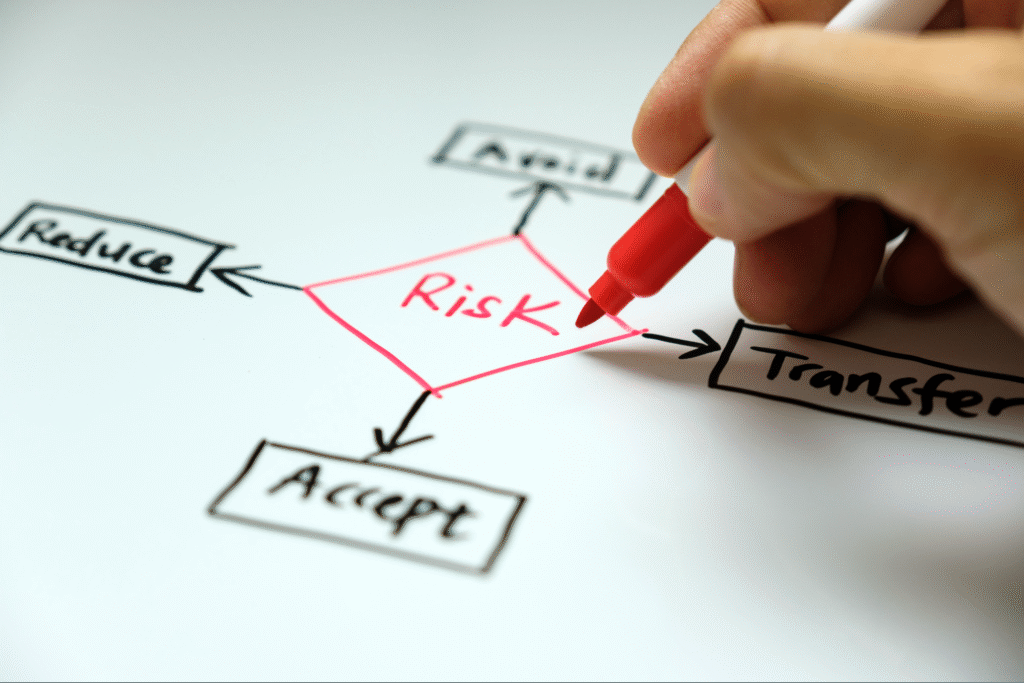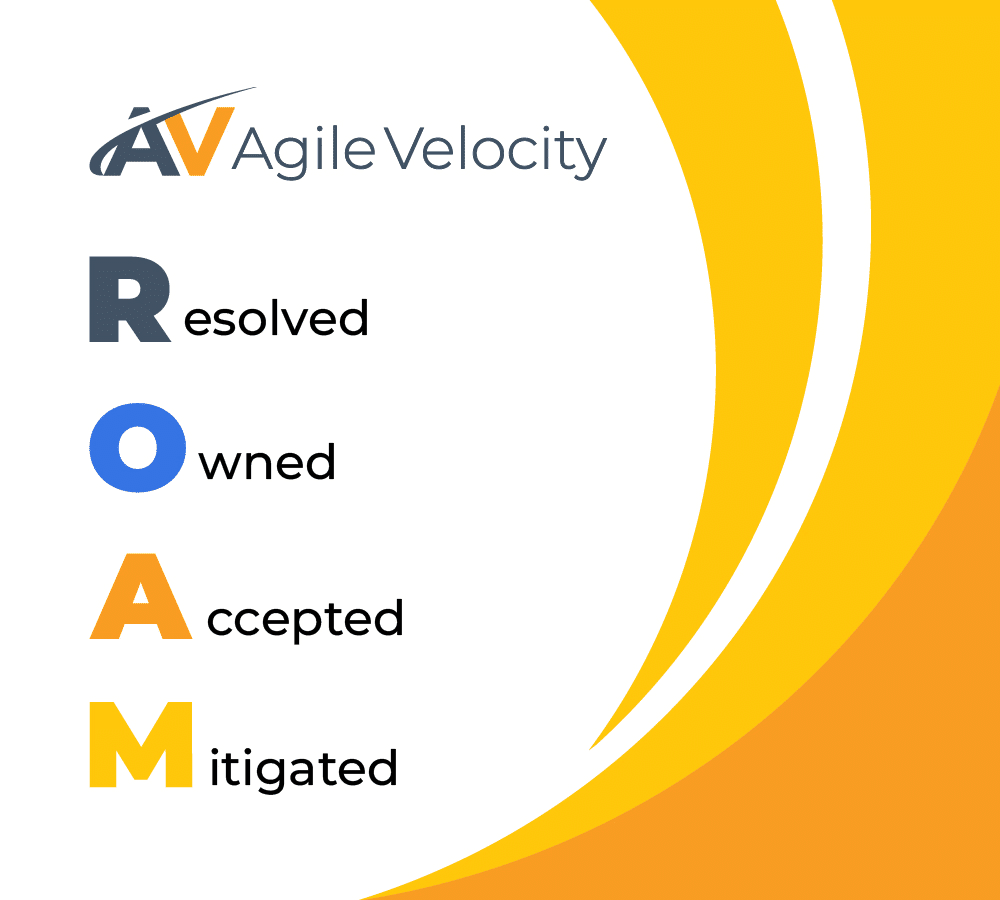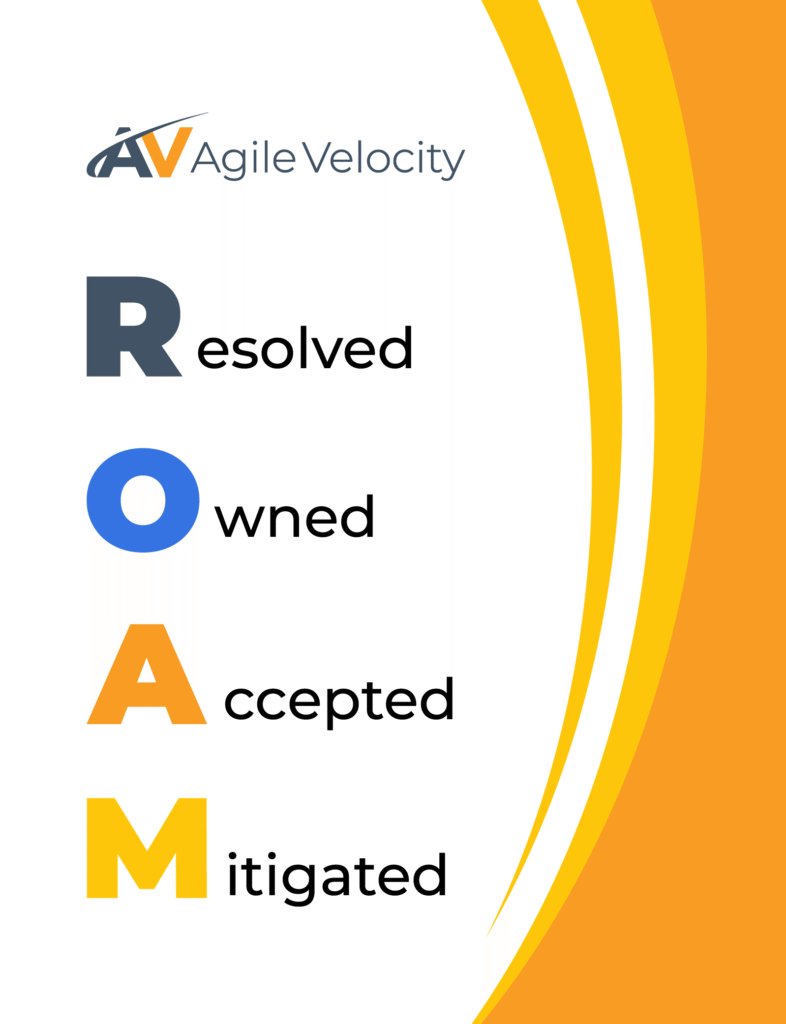During PI Planning, where teams align on objectives for the upcoming Planning Interval (PI), risk visibility is critical. The ROAM model – standing for Resolved, Owned, Accepted, Mitigated – offers a lightweight, structured way to surface and categorize risks in real time. This article explores how ROAM simplifies risk discussions, embeds ownership, and strengthens ongoing risk management across the Agile Release Train.
PI Planning is a foundational event in SAFe, where teams align on shared objectives, coordinate Iteration planning, and commit to delivering value over the course of a Planning Interval (PI). Introducing the ROAM model into this session provides an intuitive framework for tackling risks while maintaining the collaborative and adaptive ethos of Agile. Resolved, Owned, Accepted, or Mitigated – these four simple yet powerful labels offer teams and stakeholders an effective way to classify and manage potential obstacles. However, adopting the ROAM model is only the beginning. Its true value lies in the follow-through – ensuring risks are regularly revisited and actively managed as the PI unfolds.
This article explores the mechanics of the ROAM risk model, showing how it simplifies risk discussions during PI Planning, and why it’s a natural fit for achieving alignment in scaled Agile environments. You’ll also discover actionable steps to integrate the ROAM process into your risk management practices, and how ongoing oversight can significantly improve your team’s ability to adapt and thrive. Whether your organization is embarking on a full-scale Agile Transformation or refining its SAFe practices, mastering the ROAM model puts you one step closer to greater organizational agility, and the predictable delivery of results.
What is the ROAM Risk Model in PI Planning?
Successful Agile Transformation and organizational agility require clear risk awareness, especially during important planning sessions like PI Planning. The ROAM risk model is a proven tool that simplifies the process of identifying, categorizing, and addressing risks within these sessions. Designed to encourage transparency, accountability, and action, the ROAM model ensures that potential challenges are neither overlooked nor allowed to disrupt progress across the Agile Release Train (ART). By jump-starting open discussions, it lays a strong foundation for structured, ongoing risk management.
PI Planning, a cornerstone event within SAFe, aligns teams, defines shared objectives, and sets Iteration goals for the upcoming Planning Interval (PI). Incorporating the ROAM model into this event elevates its effectiveness by ensuring that risks are clearly identified, thoroughly discussed, and appropriately owned. This approach not only minimizes surprises but also reinforces the collaborative ethos of Agile Methodologies.
However, the ROAM model is more than just a one-time exercise. The real power of ROAM isn’t in the initial discussion—it’s in how teams revisit and manage risks consistently across the Planning Interval. By fostering alignment at every level, and embedding proactive risk management into Agile practices, the ROAM risk model strengthens your organization’s ability to adapt, deliver consistent value, and achieve meaningful outcomes.
What Is the ROAM Risk Model?
The ROAM risk model is a straightforward yet effective framework for categorizing and managing risks within Agile environments, specifically during PI Planning sessions in SAFe. The acronym ROAM stands for Resolved, Owned, Accepted, and Mitigated—each representing the current status of a risk and guiding teams toward appropriate actions. Here’s what each classification means:
- Resolved: These are risks that have been completely addressed and no longer pose a threat. They are essentially removed from any further discussion.
- Owned: Risks that require further attention are assigned to a specific individual, such as a Product Owner, Scrum Master, or other designated stakeholder. This person is responsible for tracking and ultimately resolving the risk.
- Accepted: Some risks, due to their low likelihood or minimal impact, may be noted but not actively managed.
- Mitigated: These risks are actively managed to reduce their potential impact or likelihood. Specific actions are planned or underway to address and control these risks proactively.
This structure ensures that every identified risk is approached with intentionality and transparency. The simplicity of the ROAM model makes it easy for teams to adopt, while still fostering meaningful risk conversations. Its clear categorization helps teams, Agile Release Trains (ARTs), and stakeholders quickly grasp each risk’s status and understand what needs to be done next.
Benefits of the ROAM Risk Model for PI Planning
The ROAM risk model brings numerous advantages to PI Planning, making risk management a structured and collaborative process that aligns with Agile principles. By fostering open discussions, ensuring visibility, reinforcing accountability, and upholding Agile values, the ROAM model equips teams and stakeholders with the tools they need to effectively identify and address risks.
- Encourages Transparent Conversations: One of the greatest strengths of the ROAM model is its ability to facilitate open and honest discussions about risks. Given the range of participants in PI Planning—Scrum Teams, Scrum Masters, Product Owners, and senior stakeholders—ROAM provides a shared framework that makes it easier for teams to identify, categorize, and address potential issues without fear or hesitation.
- Enhances Risk Visibility: The simplicity of this framework ensures that risks are clearly categorized and easily understood. By breaking them down into Resolved, Owned, Accepted, and Mitigated, teams can quickly see where their attention is needed.
- Strengthens Accountability: Accountability is central to the ROAM model. By assigning ownership to risks labeled “Owned,” teams ensure each concern has a clear point of responsibility. For higher-impact risks, involving Business Owners or leveraging Lean Portfolio Management helps address them at the right level of authority.
- Promotes Alignment with Agile Principles: No matter what framework your organization is adopting, the ROAM model aligns seamlessly with the Agile mindset of responding to change. It transforms risk management into a continuous, transparent practice that fuels better decision-making across the organization.
How to Use the ROAM Risk Model During PI Planning

Effectively integrating the ROAM risk model into your PI Planning session ensures that teams identify, categorize, and address risks with clarity and accountability. Follow these steps to create an environment where potential obstacles are openly discussed, ownership is clearly established, and actionable plans are developed to uphold your Iteration Objectives and Agile Release Train (ART) outcomes.
Encourage Teams to Surface Risks
Begin by creating a safe space for all PI Planning participants—Scrum Teams, Scrum Masters, Product Owners, and other stakeholders—to voice potential risks. Emphasize that risk identification is a proactive step toward success, not an indictment of failure. Teams should consider technical dependencies, resource constraints, regulatory requirements, or any other factors that might impede Iteration Objectives. For example, a Product Owner might raise an external dependency that threatens on-time delivery, while a team handling AI Solutions could identify capacity limits as a potential blocker.
Categorize Risks Using the ROAM Risk Model
After identifying risks, categorize them as Resolved, Owned, Accepted, or Mitigated. This helps teams focus on what truly matters, and allows them to plan their next steps more effectively.
Assign Ownership and Involve Stakeholders
For risks labeled Owned or Mitigated, assign a specific individual or stakeholder group to follow through. Complex or high-impact risks may require escalation to Business Owners or the use of a lean management approach to ensure the right level of authority is involved.
Align Risks With Iteration Objectives
Link each risk to the Iteration Objectives agreed upon during PI Planning. When a critical business feature is threatened by a risk, for instance, the team should adjust scope or reexamine priorities to navigate challenges effectively.
Document and Share the Results
Maintain a visible record of all identified risks, their categories, and associated actions or owners. This could be in a collaborative digital space or a physical ROAM board. Keeping everything transparent encourages accountability and ensures that risks remain top of mind after PI Planning.
Post-PI Planning: Managing Risks Identified in ROAM
The ROAM model is only effective if the identified risks remain visible and actionable throughout the Planning Interval (PI). Here’s how to maintain momentum, and ensure the follow-through needed for successful risk management:
- Regularly Review Owned Risks: Schedule check-ins—or “sync” events—with risk owners to monitor progress. This keeps potential obstacles from drifting out of sight and forces continuous engagement.
- Track Mitigation Actions Consistently: Mitigated risks should be tracked as part of the team’s daily work to ensure proactive efforts remain on schedule.
- Update and Reassess Risk Status: All Owned risks need to be managed with more rigor and diligence than the initial ROAM discussion. As actions are taken, some risks may move from Mitigated to Resolved or, if they grow in complexity, require escalation. Make it a habit to revisit the ROAM board periodically to keep all statuses current.
- Escalate Risks When Necessary: Risks that exceed the scope of a single team may require senior attention. Involving Business Owners or tapping into lean management approaches prevents such risks from becoming larger barriers.
Real-World Application Tips for ROAM and Risk Management

Below are a few tried-and-true practices to help you maximize the impact of the ROAM model across your organization:
- Avoid Misclassifying Risks: Labeling a significant technical issue as “Accepted” when it needs immediate attention is a common pitfall. Involve knowledgeable stakeholders in classifying risks to reduce blind spots.
- Keep Ownership Front and Center: Each Owned risk should generate clear action items, checked regularly in Agile events like Sprint Retrospectives.
- Engage Stakeholders Early and Often: Involving all levels of leadership and delivery teams reduces surprises and fosters a shared sense of commitment.
- Embed continuous improvement: True benefits emerge when you monitor ROAM items just as consistently as any other high-priority tasks in your backlog. This prevents risk logs from becoming static documents.
How the ROAM Model Aligns With Agile Velocity’s Principles
Agile Velocity’s mission is to empower organizations to achieve sustainable improvement and deliver business results through Agile. The ROAM risk model aligns seamlessly with these values by enabling organizations to plan for, visualize, and relentlessly address potential barriers to success.
- Sustainable Improvement With Early Risk Management: Early surfacing of issues helps teams avoid expensive last-minute recovery efforts.
- Fostering Collaboration and Transparency: The clear categorization of risks invites input from every corner of your Agile Release Train, strengthening buy-in for any necessary changes.
- Accountability and Empowerment: By assigning responsibility, the ROAM model lets teams act decisively while staying aligned with larger business goals.
- Continuous Improvement in Risk Practices: Frequent re-assessment of ROAM categories ensures you’re always refining how you plan and deliver.
- Building a Culture of Trust and Engagement: Ensuring all team members feel safe to express their thoughts and raise concerns without fear of negative consequences is crucial. This openness is vital to effective risk management and aligns with the principles of the ROAM model.
- Valuing Diverse Perspectives: By promoting an inclusive atmosphere, teams are more likely to surface a wide array of risks, benefiting from the varied experiences and insights of all stakeholders.
Strategically Embrace Risk Management with the ROAM Model
The ROAM risk model is more than just a framework—it’s a practical way to drive transparency, accountability, and proactive risk management during PI Planning in SAFe. By classifying risks as Resolved, Owned, Accepted, or Mitigated, teams are better equipped to align on clear actions that reinforce Iteration Objectives and Agile Release Train goals. Its true power shines when organizations continually revisit these risks, turning initial discussions into tangible results.
When integrated effectively, the ROAM model strengthens your organizational agility, helping teams navigate potential challenges with confidence and clarity. It fosters collaboration, empowers ownership, and operationalizes continuous improvement—all essential for any successful Agile Transformation.
Embedding risk management practices like ROAM strengthens organizational agility and resilience. Organizations looking to deepen these practices can benefit from expert coaching and support. Agile Velocity can help. Through services such as Agile Coaching, SAFe Agile Transformation, and lean management solutions, we partner with you to embed best practices like the ROAM model into your daily workflows. With a steadfast commitment to sustainable improvement, your teams will be equipped to transform risks into opportunities and deliver results that truly matter.





